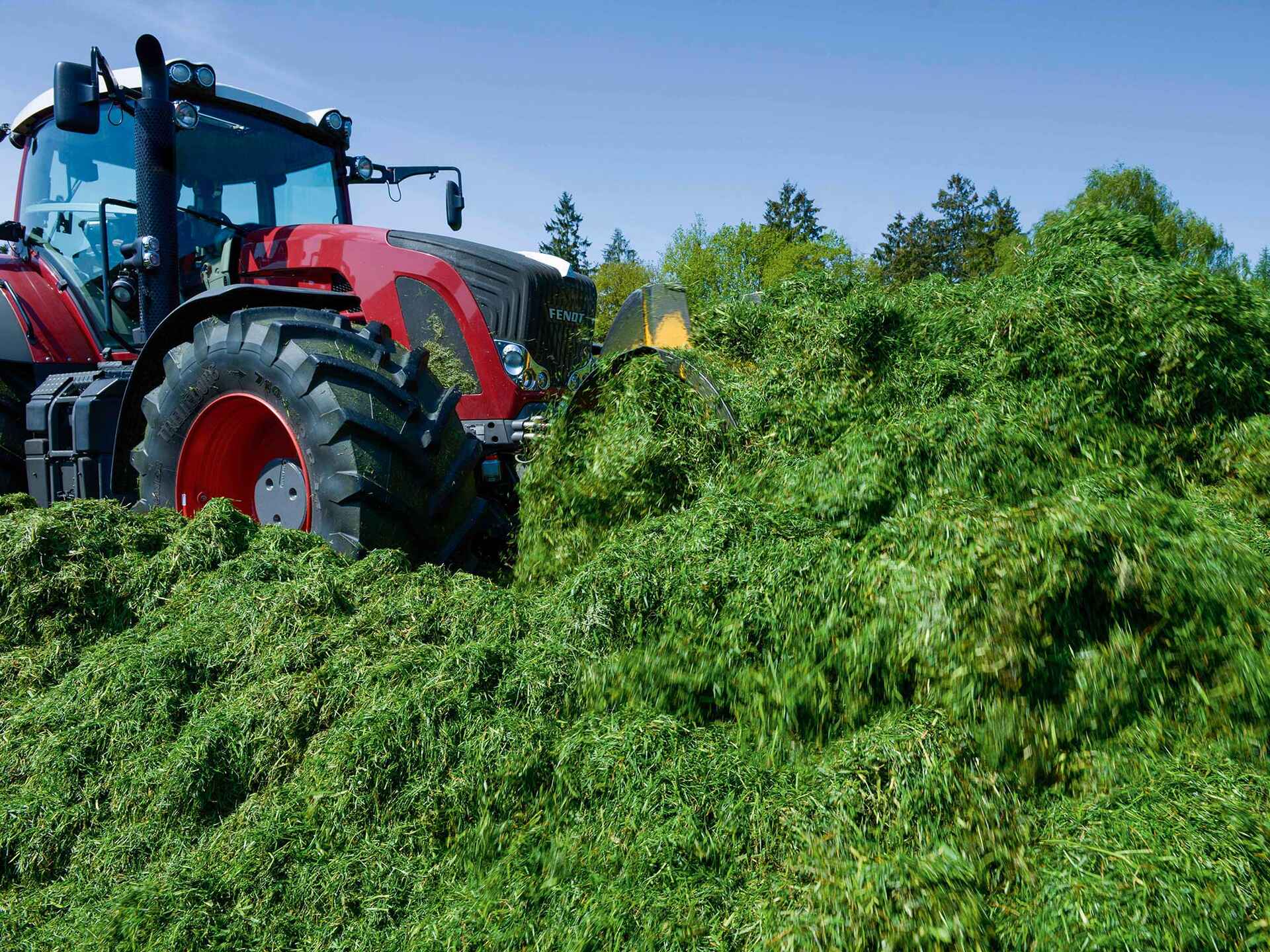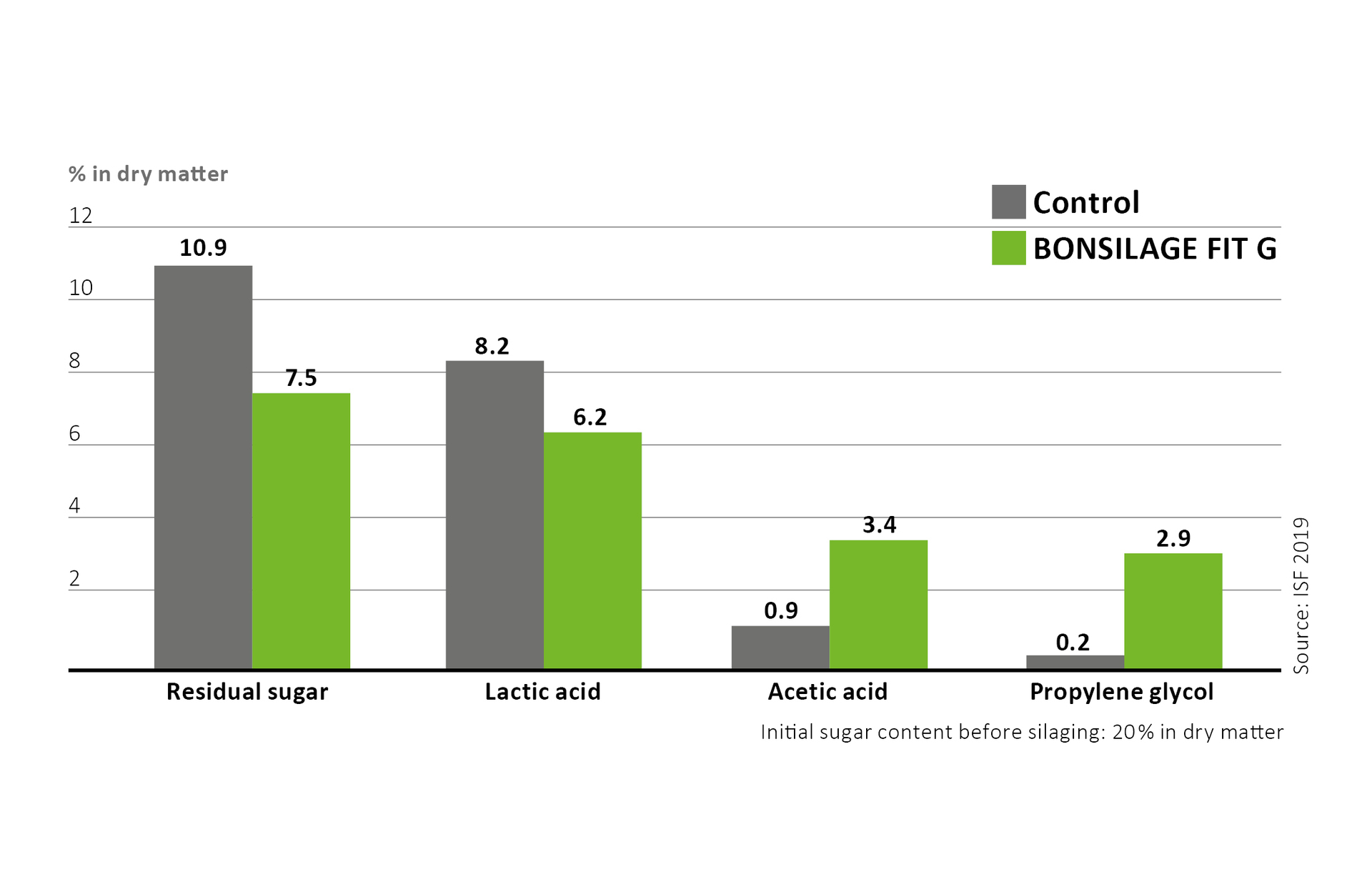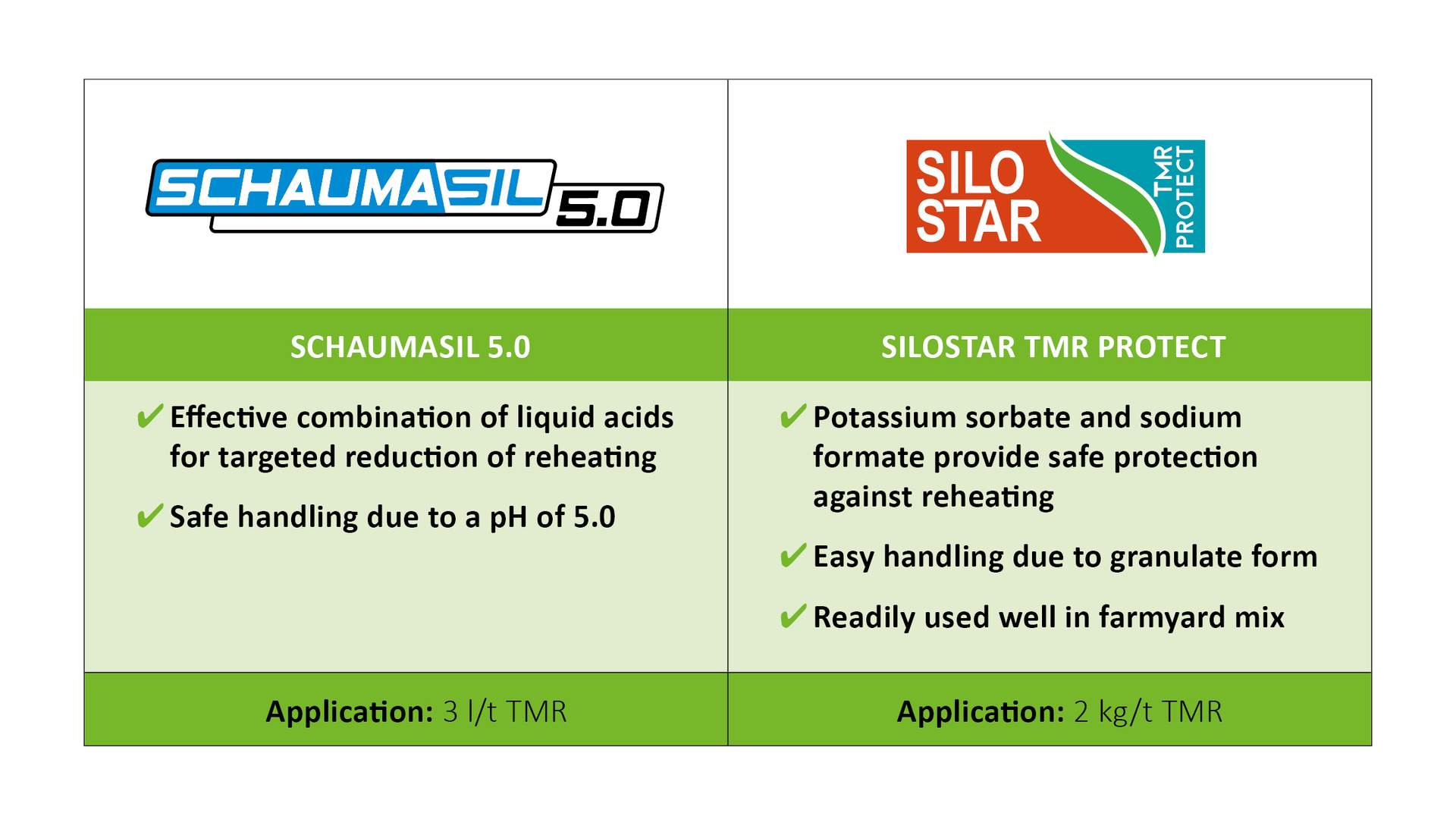
Reacting correctly to high residual sugars in grass silage

Cold nights and sunny days can lead to high sugar levels in silage. Even after fermentation is complete, silage still has a high residual sugar content, which increases the risk of reheating. When such silage is used as feed, the risk of rumen acidosis increases. By using BONSILAGE silage additive, the fermentation process in silage can be controlled to achieve target levels. As a result, a large part of the sugar in the grass is broken down during silaging. The acetic acid that forms in the process protects the silage from reheating. Propylene glycol, which is produced from the sugar when using the silaging agent BONSILAGE Fit G, also relieves the burden on the cow's metabolism. In grass silage that is not treated with BONSILAGE, the residual sugar content is significantly higher due to the lack of fermentation acidity (see Figure 1).
Do not feed warm meal
Reheating of the meal ration has a negative effect on feed intake and health of the dairy herd. Therefore when feeding grass silage with a high level of residual sugar, you should especially make regular checks on the ration for reheating. If the meal ration gets warm on the feed table, it is recommended to use SCHAUMASIL 5.0 or SILOSTAR TMR PROTECT to ensure the feed intake and performance of the cows (see Fig. 2).
Preventing acidosis
In addition to the increased risk of reheating there is also is an increased risk of acidosis when feeding grass silage with a high level of residual sugar. Sugar can be broken down extremely rapidly in the rumen. Although this provides energy for microbial protein synthesis, it also leads to a high formation of acid and thus to a reduction in pH in the rumen. The consequences of acidosis are a declining feed intake, poor feed conversion and a decrease in milk yield and compounds. Therefore, with silage that contains high levels of residual sugars, attention should be given to adjusting the composition of meal ration. In addition to the selection of the right feed concentrate components, the use of RINDAMIN BP additionally helps ensure rumen pH. A combination of selected buffer substances protects against rumen and metabolic acidosis.

